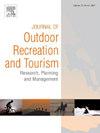Leveraging human mobility data to assess recreational activity across the United States’ most visited National Forest
IF 4.4
3区 管理学
Q1 HOSPITALITY, LEISURE, SPORT & TOURISM
Journal of Outdoor Recreation and Tourism-Research Planning and Management
Pub Date : 2025-10-17
DOI:10.1016/j.jort.2025.100973
引用次数: 0
Abstract
Increasing participation in outdoor recreation is driving elevated levels of human presence in wildlands. If properly managed, outdoor recreation can benefit conservation goals while providing the public with numerous benefits. However, balancing increased demand for recreation opportunities and maintaining ecological integrity can pose difficult tradeoffs for managers. As such, there is a need for additional data-driven resources to help inform land management decisions. Traditional approaches of measuring recreational use, such as trail counters, are costly, labor intensive, and lack the ability to efficiently scale up across large areas. Human mobility data (HMD) offers a detailed, dynamic representation of the human footprint and can provide essential information for the management of human activity at a fine resolution across broad scales. HMD is relatively low-cost and can be analyzed to discern different types of recreation behaviors (e.g., snowmobiling, hiking). Our objective was to explore how HMD can be used to better understand recreation patterns and behaviors within the White River National Forest in Colorado, the nation's most visited National Forest. We leveraged 233 million smartphone locations over 4 years to 1) discern spatial visitor use patterns by creating interactive maps of human use intensity across the WRNF, 2) classify recreation behaviors and summarize user types, 3) quantify overlap between recreation and wildlife habitat.
利用人类流动性数据来评估美国游客最多的国家森林的娱乐活动
越来越多的人参与户外娱乐活动,这使得人类在荒地上的存在程度有所提高。如果管理得当,户外娱乐活动可以促进保护目标,同时为公众提供许多好处。然而,平衡对娱乐机会的需求增加和保持生态完整性可能给管理者带来困难的权衡。因此,需要额外的数据驱动资源来帮助为土地管理决策提供信息。传统的测量娱乐用途的方法,如小径计数器,成本高,劳动密集,并且缺乏在大范围内有效扩展的能力。人类移动数据(HMD)提供了人类足迹的详细、动态表示,可以在大尺度上以精细的分辨率为人类活动的管理提供必要的信息。HMD的成本相对较低,可以通过分析来辨别不同类型的娱乐行为(如雪地摩托、徒步旅行)。我们的目标是探索如何使用HMD来更好地了解科罗拉多州白河国家森林的娱乐模式和行为,这是美国游客最多的国家森林。我们在4年内利用2.33亿个智能手机位置,1)通过创建跨WRNF人类使用强度的交互式地图来识别空间游客使用模式,2)分类娱乐行为并总结用户类型,3)量化娱乐和野生动物栖息地之间的重叠。
本文章由计算机程序翻译,如有差异,请以英文原文为准。
求助全文
约1分钟内获得全文
求助全文
来源期刊

Journal of Outdoor Recreation and Tourism-Research Planning and Management
HOSPITALITY, LEISURE, SPORT & TOURISM-
CiteScore
6.70
自引率
5.30%
发文量
84
期刊介绍:
Journal of Outdoor Recreation and Tourism offers a dedicated outlet for research relevant to social sciences and natural resources. The journal publishes peer reviewed original research on all aspects of outdoor recreation planning and management, covering the entire spectrum of settings from wilderness to urban outdoor recreation opportunities. It also focuses on new products and findings in nature based tourism and park management. JORT is an interdisciplinary and transdisciplinary journal, articles may focus on any aspect of theory, method, or concept of outdoor recreation research, planning or management, and interdisciplinary work is especially welcome, and may be of a theoretical and/or a case study nature. Depending on the topic of investigation, articles may be positioned within one academic discipline, or draw from several disciplines in an integrative manner, with overarching relevance to social sciences and natural resources. JORT is international in scope and attracts scholars from all reaches of the world to facilitate the exchange of ideas. As such, the journal enhances understanding of scientific knowledge, empirical results, and practitioners'' needs. Therefore in JORT each article is accompanied by an executive summary, written by the editors or authors, highlighting the planning and management relevant aspects of the article.
 求助内容:
求助内容: 应助结果提醒方式:
应助结果提醒方式:


